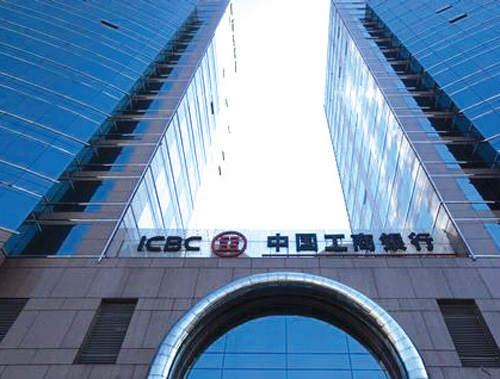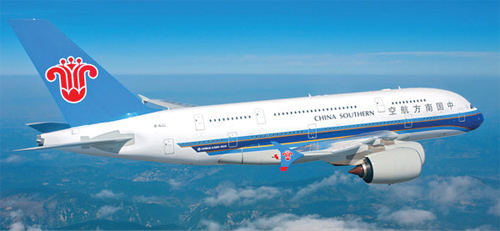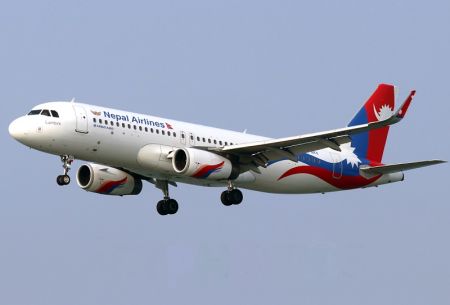--By Saneev Sharma
China is restraining itself from the image of ‘cheap factory goods manufacturer’ and already made a deep penetration with some of the powerful brands across the world. The country’s (China) growth in terms of its economic and military power is moving along with its business — Globally.
Thanks to the liberal economic policies of China which has opened a vast market for the western companies in early 90s’. Now after two decades, China is giving a firm completion in the global markets through some its niche products in terms of affordability and durability. The expansion of Chinese businesses in the global platform starts from telecommunications-IT, financial sector, consumer electronics, aviation, energy and automotive etc.
This has resulted in the emergence of some influential and powerful Chinese multinational companies over the years.
IT/Telecommunications
IT and telecommunications is the major sector where China has managed significant outbound direct investments. The inception of Chinese multinational tech companies can be tracked around 25-30 years. The Huawei Technologies is an example of successful Chinese business expansion. Headquartered in Shenzen, Huawei is the largest telecommunications equipment manufacturer in the world having overtaken the Swedish multinational company Ericsson in 2012. The company was founded by Ren Zhengfi, an ex-PLA officer in 1987 as a private company, with an initial registered capital of 21,000 Yuan. Huawei provides services in building telecom networks, manufacturing communications devices for consumer market such as smartphones and tablets, providing operational and consulting services for its clients throughout the world. The company’s products and services have been deployed in more than 140 countries. Huawei currently provides its services to 45 of the world’s 50 largest telecom operators. In 2012 the company’s revenue totaled 217.9 billion Yuan (USD 35.58 billion) and earned 14.9 billion Yuan (USD 2.43 billion) as profit.

The ZTE Corporation is another Chinese IT giant. Founded as Zhogxing Semiconductor Company Ltd. in 1985, the company changed into ZTE Corporation in 1997. Since then it has been steadily expanding its business and has emerged as Chinese multinational telecommunications equipment and IT systems company. In 2012 ZTE was crowned with world’s fourth-largest mobile phone manufacturer by unit sales and fifth-largest telecoms equipment maker by revenues. Not only in China and developing countries, the company has also deeply penetrated the United States where it won the 5th place in smartphone market. Not only in US, ZTE Corporation has expanded its business all across the Asia-Pacific, Africa and Europe. As of 2011, the company’s revenue and profit are reported to be 86.25 billion Yuan (USD 14.08 billion) and 1.06 billion Yuan (USD 173 million) respectively.
The Lenovo Group is another worth mentioning name. With headquarters in China and US, the company surpassed US tech giant Hewlett-Packard to become the world’s largest PC maker in the 2nd quarter of 2013. Lenovo has operations in more than 60 countries and sells its products in around 160 countries. It manufactures tablet computers, smartphones, workstations, servers, electronic storage equipments, smart TVs and IT management software along with PCs. The company was founded in Beijing in 1984 in the name of Legend. Lenovo is the manufacture of award winning laptop and desktop computer series such as ThinkPad and ThinkCenter. Lenovo reported annual revenue of USD 29.57 billion net income of USD 472 million from its worldwide business in 2012.
In the list of Chinese multinational companies, Baidu is also growing fast growth. It is the Chinese equivalent of Google, the world’s largest internet search engine. The company was founded in 2000 by Robin Li, a US educated entrepreneur. Just as Google has expanded beyond search engine to hardware and software, Baidu has moved into new ventures such as smartphones and cloud computing. The company launched its cloud-based operating system, Baidu Cloud, last year. It also owns Baidu Yi, a Android based operating system for for smartphones. According to various researches, Baidu is the search engine for 340 million of the China’s 540 million web users. Baidu was ranked 5th in the Alexa Internet rankings in 2012. In December 2007, Baidu was listed in the US stock market. The company earned revenue of 23.3 billion Yuan (USD 3.80 billion) and profit of 11.1 billion Yuan (USD 1.81 billion) in 2012.
Financial Sector
The Chinese business expansion is going beyond the technology sector. Many Chinese Banks and Financial Institutions (BFIs) are competing against their western peers in the global financial market. Though all big banks in China are state-owned, they are employing various strategies for their international businesses. Especially, the ‘big four’ Chinese banks emerged as world’s largest financial institutions along with western financial companies.
Founded in 1984, Industrial and Commercial Bank of China (ICBC) is currently the most internationalised among Chinese commercial banks. In 2012 ICBC was announced as the world’s largest bank commercial bank by profit earnings and market capitalization. As of 2010, the bank possesses assets worth 12.55 trillion Yuan (USD 1.9 trillion) and has over 18,000 outlets and 106 overseas branches globally. ICBC won the 1st place on Forbes Global 2000 list of world’s largest public companies in 2013. Similarly, the bank was ranked No 1 in The Banker’s Top 1000 World Bank rankings.
Similarly, the century-old Bank of China (BOC) is another major global Chinese bank. Founded in 1912, BOC operates in 32 countries with more than 590 branches and outlets across the world. In 2009, it became the second largest lender in China and fifth largest bank in the world by market capitalization value.

The Agricultural Bank of China (ABC) has also maintained place among big international BFIs. With nearly 24,000 branches globally, ABC provides services to 320 million retail customers and 2.7 million corporate clients. The bank went public in 2010, fetching the world’s biggest ever initial public offering. In 2011, ABC ranked 8th among the ‘World’s Top 1000’ banks and was announced 25th largest public company in Forbes Global 2000. The bank founded in 1951, operates throughout mainland China, Hong Kong, London, Tokyo, New York, Frankfurt, Sydney, Seoul and Singapore.
China Construction Bank Corporation (CCB) is another big Chinese financial service provider. In 2012 CCB became world’s 2nd largest bank by market capitalization and 13th largest company in the world. As of 2009 the bank’s total assets totaled USD 1.40 trillion. The CCB maintains its core banking business in Germany, Japan, US, Australia, Vietnam, South Korea, Singapore and South Africa.
Energy
Energy is among the most lucrative sector for Chinese in terms of investing abroad. Due to rapid economic expansion, China is witnessing huge upsurge in demand of oil and gas. To meet the country’s energy demand state-owned Chinese multinational energy giants have emerged. China Petroleum and Chemical Corporation or Sinopec is the biggest energy investor. Sinopec’s mainly deals in oil and gas exploration, production, refining and sales of petrochemical products as well as storage and pipeline transportation of crude oil and natural gas. Sinopec is hugely investing in Africa, part of Arab region, Australia and North America for oil and gas production. Sinopec has expanded its global business through the acquisitions of Canadian and Latin American energy firms in recent years. Sinopec is also involved in venture business with the American energy enterprise, Exxon. With an estimated asset worth 1.24 trillion Yuan (USD 202.57 billion), the company was ranked 9th in Fortune Global 500 in 2009 and climbed up to 7th place in 2010.
The China National Petroleum Corporation (CNPC) is another big energy company. It is running 30 major international oil and gas exploration and production in 10 countries including Canada and New Zealand. Various data showed that the company holds 3.7 barrels of crude oil reserves and produced 54 billion cubic metres of natural gas by the end of 2012. In 2010, CNPC’s sister company Petro China became the world’s second largest company in terms of market capitalization. The company’s total asset is valued around 2.94 trillion Yuan (USD 481.07 billion).
Apart from oil and gas, Chinese outbound energy investment is also increasing in Hydropower sector. Due to aggressive expansion strategies and massive investments, Sinohydro became one of biggest hydropower and infrastructure contractor of the world. Founded in 1950, the company is being symbolised by westerners as ‘the face of Chinese expansion’. Sinohydro is currently operating in 55 countries across the world. In 2012, the company ranked 14th in Engineering News-Record Top 225 Global Contractors in terms of annual revenue.
Automotive
Lagging behind Japanese, European and American companies for many years, Chinese auto manufacturers are now muscling their way into the global auto market. Rising joint ventures and expansive strategies has transformed the China’s state-owned auto maker SAIC Motor Corporation Limited into a global player. Founded in 1995 as Shanghai Internal Combustion Engine Components Company, the company re-branded as SAIC in 2011. Throughout the years the company has gone through numerous mergers as re-structuring processes. SAIC is the biggest automotive company in China by production volume having produced more than 4.5 million vehicles last year. The company is expanding its business and global market reach through joint ventures with major international auto makers such as General Motors, Volkswagen and Volvo. SAIC has hundreds of production facilities in China including Africa and the UK.
Consumer Electronics
Chinese companies are also expanding their arms in global consumer electronics market. Haier is one of the successful Chinese multinational consumer electronics and home appliances company which managed to pave its way into the market dominated by big names from Japan, South Korea, Europe and US. Its produces microwave ovens, washing machines, refrigerators, vacuum cleaners, dish washers, room heaters, air conditioners, mobile phones, personal computers and televisions. As of 2011, Haier brand had the world’s largest market share in ‘white goods’ appliances.
Aviation
Chinese airlines are among the major global passengers carriers having largest air fleet. China Southern Airlines is the biggest Chinese airline. It is the world’s sixth largest airline by number of passengers and Asia’s largest airline in terms of air fleet size. Its fleet size consists of total 422 aircrafts. China Southern is also the world’s fourth largest airline by domestic passenger traffic and ranked sixth in scheduled domestic distance flown. Founded in 1988, the airline flies to 121 global destinations including China. The company reported to have carried 76.5 million domestic and international passengers in 2010 and earned 5.8 billion Yuan (USD 833 million) that year. In 1997, China Southern was listed on the stock exchanges of Hong Kong and New York and raised USD 700 from the IPOs.

Air China, the official flag carrier of China is another big commercial entity. Established in 1988, the airline’s current fleet size is 429. It is the world’s 10th largest airline by fleet size. Air China is a member of Star Alliance, the world’s largest alliance of 28 major commercial passenger carriers. The airline’s flies to more than 200 destinations across Asia, Australia, Middle East, Europe, North America and South America. Air China carried 60 million domestic and international passengers and earned profit of 12 billion Yuan (USD 1.83) in 2010. The airline was listed in stock exchanges of Hong Kong and London in 2004.
Given China’s rapid economic development, the number of Chinese businesses in global market is constantly rising. According to 2013 list of Fortune Global 500 Companies, the number of Chinese companies in the list has gone up to 89 from last year’s 73.





















